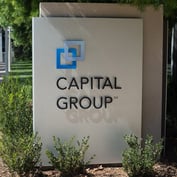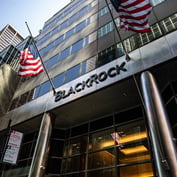This year’s revival in emerging markets has been led by Chinese stocks. But investing China has dramatically changed over the past few years.
Because of foreign investment restrictions, most Chinese mutual funds and ETFs do not invest in mainland Chinese stocks, also known as “A-Shares.” However, deregulation is now underway and Chinese ETFs that hold exposure to A-Share” have invaded the U.S. marketplace.
To get more insight, Research magazine spoke with Brendan Ahern, chief investment officer at New York City-based KraneShares. His firm offers a lineup of China ETFs that invest in mainland stocks. A slightly edited version of the conversation is below.
Why has investing in China changed more over the past 10 years than previous 50?
The onshore Chinese exchanges, the Shanghai and Shenzhen Stock Exchanges, were established in the early 1990s while the Hong Kong Stock Exchange dates back over a hundred years. The onshore markets were ring-fenced from foreign investors due to very limited access granted. A small number of foreign institutions were given qualified foreign institutional investor (QFII) quotas that allowed them to access the onshore markets. Institutional investors such as endowments, foundations, pension plans, asset managers and brokers were given [quotas] to invest onshore though usually very small allocations relative to their size.
Renminbi QFII (RQFII) allowed Chinese asset managers to provide access with daily liquidity, which allowed them to list onshore access ETFs initially in Hong Kong. The onshore access restrictions have prevented index providers such as MSCI and FTSE to include the onshore markets in broad indices such as emerging market, global and all country world indices.
The definition of China for indices has been Chinese companies listed in Hong Kong despite the $7 trillion in market cap listed on the Shanghai and Shenzhen Stock Exchanges. Many Chinese companies wanted to list on the Hong Kong exchange and later on U.S. exchanges in order to garner a global investor base. Alibaba, the largest initial public offering in the U.S., is such an example. Due to their U.S. listing, Alibaba is not included in the definition of China.
Investors should be aware of major changes coming. In November 2014, the Shanghai Hong Kong Stock Connect launched, which allows foreign investors to access the onshore market with limited restrictions. MSCI has put the onshore markets under review for inclusion in their broader indices. Full inclusion of the onshore market would increase China’s weight from 20% to over 30% of MSCI Emerging Markets.
In November 2015 and February 2016, the U.S.-listed Chinese companies will be added to MSCI indices, which will add 3% more China to MSCI Emerging Markets. Whether you invest in active funds or passively, there will be more China in your portfolio in the years to come. With our singular focus on China, we endeavor to be the leading source of China education for investors.
Chinese stocks (A-shares) listed on Shanghai and Shenzhen stock exchanges have outperformed Chinese stocks listed in Hong Kong by around 65% over the past year alone. Why is there such a large performance discrepancy?
The onshore markets represent what the Chinese think about their economy and capital markets while the offshore market, Hong Kong and U.S.-listed companies, represent foreigners’ view of China. Something is taking place in China that foreigners have not caught onto. We believe the reform agenda of the political leadership is one factor. President Xi and Premier Li entered office as reformers and have lived up to their reputation.
Many reforms address societal needs such as healthcare, social security, food safety and the environment, which will have a positive impact on publicly traded companies in those sectors. Reform of state owned enterprises is also taking place as non-core businesses are spun off, private investor capital is invested and mergers [occur] between likeminded companies. There is a strong desire to make the SOEs more efficient and competitive. That is happening. The desire to raise domestic consumption is another key theme due to the desire to lesson economic reliance on exports.
Foreign investors have been slow to recognize the power of this political catalyst though recent performance of the Hong Kong market indicates sentiment is turning. There are dually listed companies in the onshore and Hong Kong market. The Connect program allows Chinese investors to invest in select Hong Kong listed stocks, which has added cheaper Hong Kong share classes and companies with a strong brand such as Tencent, which has 500 [million] users of their Facebook like service in China.
As much as the Hong Kong market has lagged the onshore market, the U.S.-listed companies held by our KraneShares CSI China Internet (ticker KWEB) have lagged even more dramatically. The names held by KWEB include what we believe are the elite domestic consumption names such as Alibaba, Baidu, Tencent, JD.com, VIPshop and C-trip. I believe KWEB looks compelling in light of the strong businesses held and lagging performance.








 June 01, 2015 at 08:00 PM
June 01, 2015 at 08:00 PM










